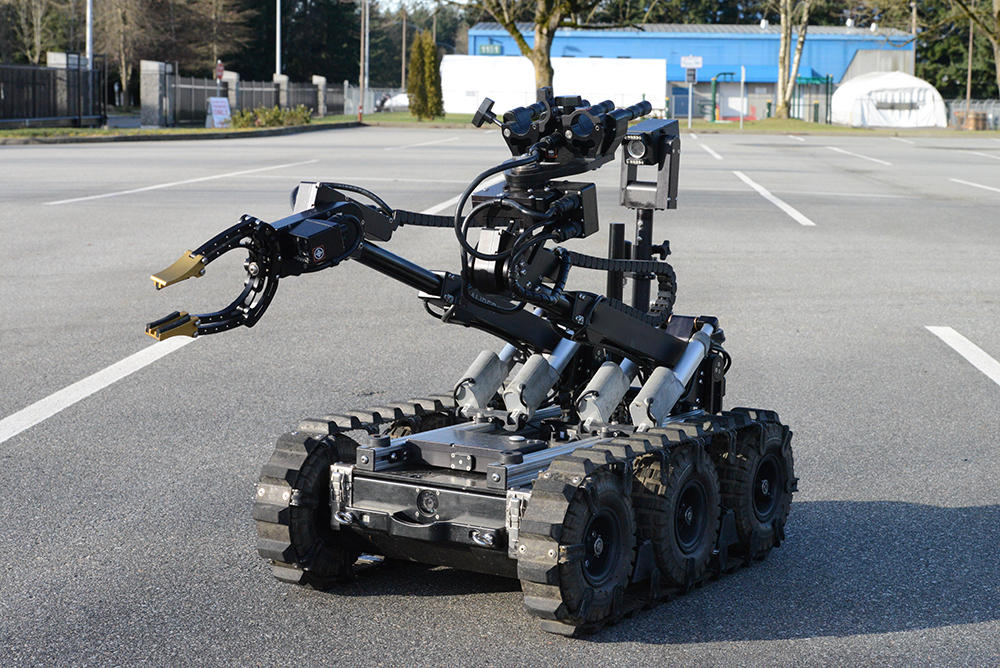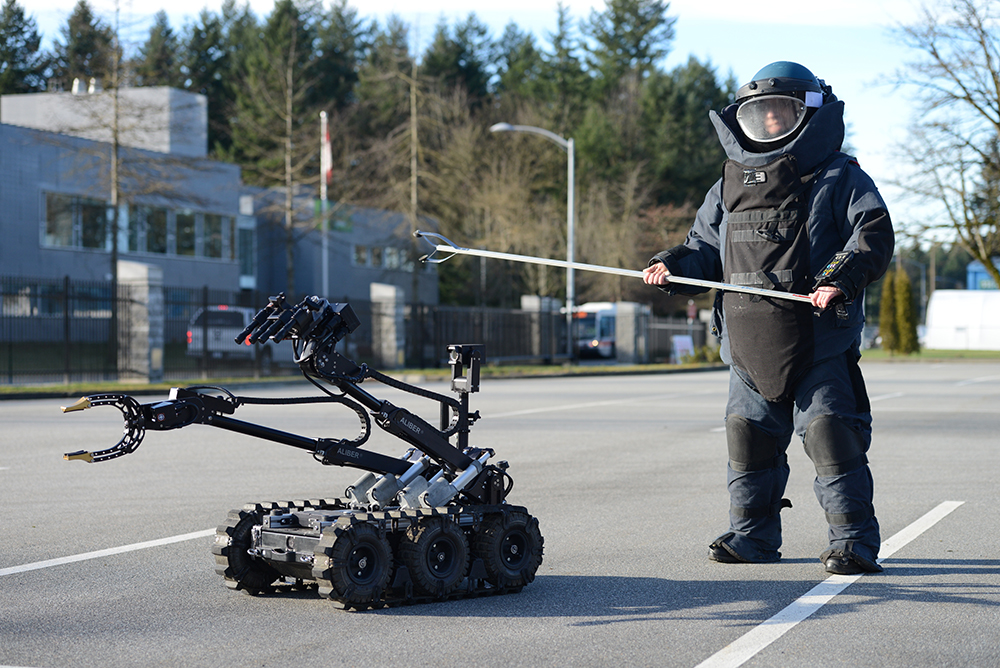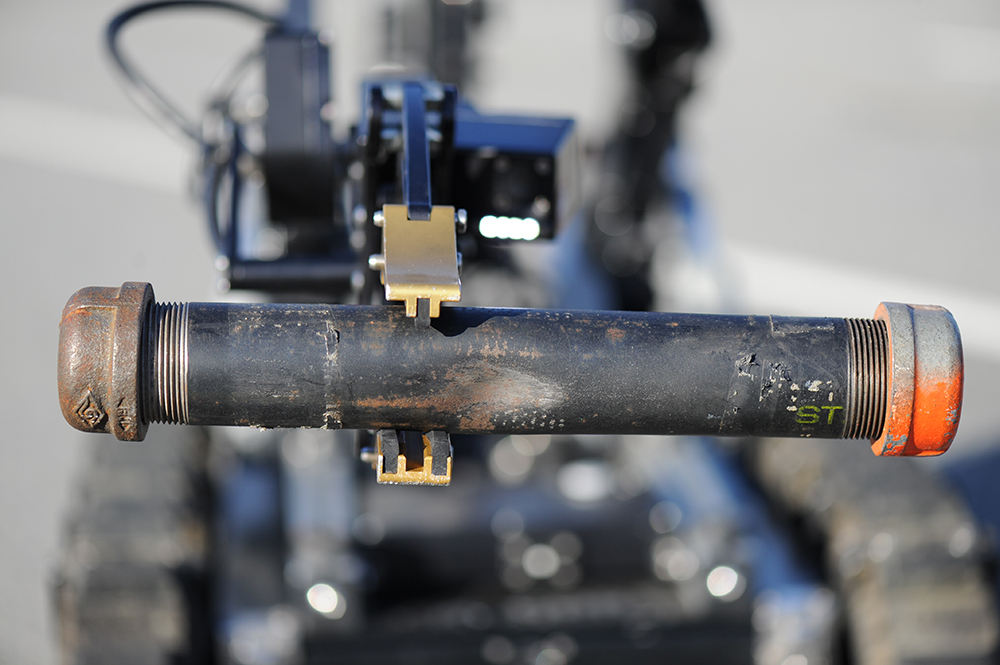Best kept secret: BC RCMP’s Explosive Disposal Unit
B.C., Explosives Disposal Services (Provincial)
2023-11-10 09:55 PST
Last summer, two male suspects entered a Saanich bank clad in full body armor and armed with semi-automatic SKS rifles. When officers arrived on scene, there was an armed robbery in progress and 22 innocent people were inside the bank. Both gunmen, later identified as twin brothers Mathew and Isaac Auchterlonie, were killed by police, while six officers were injured, three of them severely. Police said the suspects were motivated by "anti-police" sentiments.
Police later confirmed that four additional firearms, 3500 rounds of ammunition, and more than 30 improvised explosive devices were located inside their white Toyota Camry. A shelter-in-place ordered was issued.
It was up to the Explosives Disposal Unit (EDU) to decide how to safely handle those explosives and safeguard the community. EDU officers arrived from Metro Vancouver and secured the explosives until they could be safely detonated far from the city. All evidence, including chunks of metal, was collected and turned over to the major crime unit in charge.
The BC RCMP Explosives Disposal Unit is comprised of full time, highly trained Police Explosives Technicians who utilized state-of-the-art specialized equipment (disrupters, robots, bomb suits and protective gear) to render safe a multitude of explosives emergencies.
When there’s a threat of a terrorist attack, a suspicious package found, radiation detected, or a high-profile event such as the Olympics or the G8/20 Summit to secure, this is the unit that police agencies call. The EDU not only plays a vital role in protecting the public and property but it also provides education to its partners and expert testimony in court in support of explosives-related investigations.
There is always risk in our work,
says Staff Sergeant Brent Elwood, Officer in Charge of the Explosives Disposal Unit of BC RCMP. When you are dealing with explosives, if something were to go wrong, it’s catastrophic. That’s the nature of explosives.
That is why EDU try to approach a threat robotically first.

A robot designed for remote handling and render explosive safe.
We would use our robot that has two long-barrel disruptors attached,
says Elwood. The disruptor shoots a very high-pressure amount of water that can decap a pipe bomb.
The Unit has two large bomb trucks each with two robots and an X-ray system.
The robot allows us to remotely investigate potential explosives from a safe distance,
says Elwood. It has multiple high-definition cameras and can climb any set of stairs. It also has a manipulating arm with a claw so it can open doors and move items, such as a suspicious backpack, and drag it somewhere else, all controlled by the operator from inside the bomb truck.
Employing the robot is just one of the many safety measures the EDU members have must adhere to.
They also wear a 90-pound (40-kg) suit of armour that's front loaded with Kevlar and a heavy ceramic protective plate, all designed to protect the vital organs in case of an explosion. Their hands are not as protected because they need to feel or touch objects. Even their uniform is fire retardant. Instead, they wear Nitrile gives to prevent their DNA from contaminating the evidence.

A member of the Explosives Disposal Unit in a bomb suit with the robot
We get calls that are that are very simple and straightforward or incidents that could take multiple days and be varying in complexity,
says Elwood.
This is also the team that puts their lives on the line to mitigate and investigate Chemical, Biological, Radiological, and Nuclear (CBRN) attacks that can be caused by accidents, criminal or terrorists acts. CBRN also includes Dangerous Goods (DG) or Hazardous Materials (HAZMAT) incidents.
Although they are very rare occurrences, occasionally EDU has been called in to respond to call to investigate an unknown white powder,
that could be nothing which won’t be known until investigated. This kind of investigation requires special gear and detection equipment. There is extensive training in incident-response best practices. They are trained to recognize the symptoms of different CBRNE agents, strategies and procedures for approaching the scene, and how to effectively assess the site of a CBRNE incident.
EDU also provides operational supports to the Emergency Response Team (ERT).
It’s something we’ve all seen on television – bad guys blowing up a solid door to get into the place of business or a residence, causing a large explosion and widespread damage.
Police, on the other hand, use a far more subtle method of getting though a door, a wall, or window. Their primary concern is for the safety of the team or the people on the other side of the door. They use a micro amount of explosive necessary to enter through the door or structure.
It’s a combination of science and art,
says Elwood. The science is researching the specific explosive charge required to get through the target.
For example, there are a multitude of types of doors wood doors, steel doors, aluminum doors, double doors, all kinds of shapes and sizes.
That’s were our expertise comes in bases on our research, our experience, and our highly specific training,
says Elwood, who has been with the RCMP for 24 years, 19 of those with the EDU.
Typically, a police officer will have at least five years of experience before applying to the Explosives Disposal Unit. They go through a rigorous selection process, and then, about two months preparation before they can attend the five-week course at the Canadian Police College in Ottawa for the basic bomb tech training. It takes about three to four years before an officer is fully trained in all aspects of what EDU members do. Throughout their career, they must take advanced courses that are offered anywhere in Canada or the United States to learn the latest innovative techniques and equipment.
There are only 14 officers fully trained to work in this highly specialized unit that serves the province, including all the municipal police departments. There are few other units in Canada that are as skilled in these techniques, and especially in operating the bomb disposal robots.
Ideally, Elwood would like to have separate teams stationed across the province and available to respond to local incidents. Currently, there are only two officers on call per week to serve the entire province. The challenge is that if there is a call on Vancouver Island, they team must travel to the location, determine the severity of the incident, and mitigate it, before they can take another call.
Should they discover an object that is suspect, an RCMP detachment or municipal police agency will contact the Explosives Disposal Unit. They would photograph the object and send that to EDU. While EDU may be consulted for bomb threat calls, they will not attend unless the threat is very specific or is deemed credible.

Robot retrieves a pipe bomb
The role of the EDU is to render safe improvised explosive devices of anything that potentially could have criminal intent and dispose of device, explosives or ammunition. EDU also called to conduct post-blast investigations.
The training is second to none,
adds Elwood. You are often faced with a challenge, something that is extremely difficult and you must find a way to solve it. It’s very fulfilling. Very rewarding.
Because of their training, EDU members are called upon as expert witnesses in court and are often consulted by federal or provincial government agencies. They support other RCMP units such as Protective Services for VIP visits and ERT operations.
We give explosive awareness training to agencies, such as BC Hydro,
says Elwood. We will go to their site, speak with their head of security review their Emergency Response Plan to point out any areas that are vulnerable. An explosive device is very different from a gas explosion.
At the Vancouver International Airport, EDU has participated in a tabletop exercise to provide expert advise on responding to finding a large-scale device or a suspicious device in luggage at the airport.While there is there is the unpredictability and challenge of what you may face when you get called to an incident,
adds Elwood, it is still the very satisfying knowing you have saved lives.
This unit is the best kept secret in the RCMP,
says Elwood. The Explosives Disposal Unit is one of the best units in our organization. You are doing work that is completely unique to any other program.
Follow Us:
- Date modified: